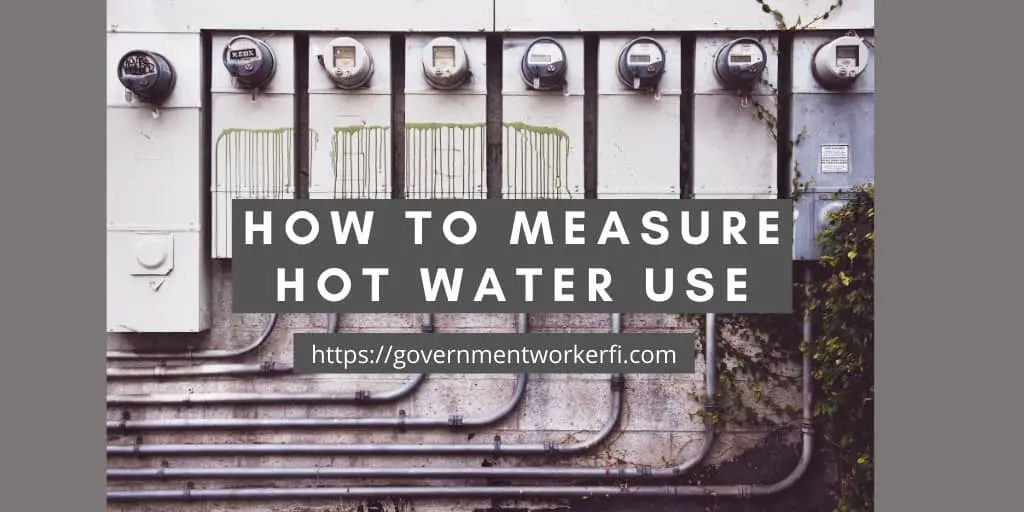I have a confession to make.
We do everything “wrong” when it comes to laundry in our house.
We never separate colors. Our clothes are dumped in the washer indiscriminately and then we hang them up to dry. And don’t even get my started about ironing. I’m not sure we even own one.
Guess what? Our clothes look just fine when we are wearing them.
Why did I just give up all of our laundry secrets?
Because I reject “Big Laundry” and “Big Clothing” conspiracies about buying into their expensive laundry-industrial-complex.
Rejecting Big Laundry’s advice can save you lots of money? One of the best ways to do it is to not use a clothes dryer.
Don’t believe me?
Don’t think you can save actual money on laundry?
Keep reading to find out how we slashed our electricity bill by more than 20% just by doing our laundry differently.
Get Gov Worker’s top 4 tips for federal employees!Table of Contents
- How I measured clothes dryer energy use
- How many watts does it take to run a dryer
- How much does it cost to run a dryer for 1 hour?
- How much energy does a dryer use to dry a load of clothes?
- How much does it cost to run a dryer per month?
- How to save money drying clothes
- Summary- just say no?
Please do not confuse my personal blog for financial advice, tax advice or an official position of the U.S. Government. This post may contain affiliate links. If you make a purchase after clicking on a link, I get a small percentage of the sale at no additional cost to you.
How I measured clothes dryer energy use
It is hard to measure how much energy a clothes dryer uses. A few years ago my wife bought me a Kill-A-Watt energy monitor. I enjoyed plugging various appliances into the Kill-A-Watt to find out how much energy they used. However, clothes dryers run on 240V. There’s no way that I could plug our dryer into the Kill-A-Watt.
In a very old version of this post, I compared our utility bills from months where we dried all of our clothes on the line against months where we used the clothes dryer for all of our laundry.
While the utility bills helped me understand how much money we could save by not using our clothes dryer, I still didn’t know exactly how much energy our clothes dryer used.
Earlier this year I bought a Sense Energy Monitor specifically so I could write more home energy saving posts on the blog. You can read my review of the Sense Energy Monitor here. I installed the Sense in my electrical panel and it is always monitoring my energy use. By looking at the waveform, it is able to identify and track energy use of various devices in my house.
Now I can open my Sense app and see details about how many times I used my dryer, how many Amps the dryer uses, and how much money I spent drying clothes any time I want.
How many watts does it take to run a dryer
Let’s talk about the difference between “power” and “energy”. In common speech, we might use these terms interchangeably, but they have much different meanings when we talk about electricity usage.
When you get your electricity bill, they charge you for the number of kilowatt hours you use. Kilowatt hours are a unit of energy. They represent how much electricity you used over the course of a month.
On the other hand, Watts are a unit of power. Power describes how fast you’re using energy. (Energy/Time in case you want to reminisce about high school physics).
So when we talk about how many Watts an electric dryer uses, we’re talking about how much power it uses. But that doesn’t necessarily tell you how it will affect your energy bills. (We will get to clothes dryer usage later on in the post).
I measured our clothes dryer wattage using the Sense. The Sense gives you a second-by-second view of energy usage. Our dryer model uses a little over 5,000 watts.
![How Much Energy Does a Clothes Dryer Use? [Surprising Facts You Need To Know] 1 How many watts does a clothes dryer use. The clothes dryer uses about 5,000 watts no matter the setting although the heater cycles on and off for the low heat mode.](https://cdn-0.governmentworkerfi.com/wp-content/uploads/2021/09/clothes-dryer-watts.jpg)
I also did some experiments. Our dryer has a “low heat” and “high heat” mode. I thought that perhaps the low heat mode was more energy efficient.
It turns out that our 5,000-Watt Dryer uses 5,000 Watts no matter what. However, in low heat mode the clothes dryer cycles the heater on and off so that it does not draw 5,000 Watts for the entire time the dryer is on. This will reduce the energy cost without changing the power required by the dryer.
How much does it cost to run a dryer for 1 hour?
Sense makes it very easy to find out the average cost of running the dryer (or any major appliance) for an hour.
I dried a couple of loads of laundry the other day to collect some data for this post.
The dryer ran for 1 hour and 39 minutes and used 4.2 kWh of electricity. Using the average US kWh rate of 10.42 cents per kWh, this would be about 44 cents.
![How Much Energy Does a Clothes Dryer Use? [Surprising Facts You Need To Know] 2 Clothes dryer energy use for drying 3 loads of clothes.](https://cdn-0.governmentworkerfi.com/wp-content/uploads/2021/09/clothes-dryer-energy-use-hourly-1024x493.jpg)
On a per-hour rate, the dryer used 2.54 kWh per hour and at a cost per kWh of 10.42 it costs about 27 cents to run a dryer for an hour.
We use Time-Of-Use (TOU) metering to save money on our electricity costs. Our utility company charges use higher electricity rates during business hours when the demand for electricity is higher. We pay much less for electricity on nights and weekends. (This is why the Sense graph showed our energy cost was so low for using the clothes dryer).
My “off-peak” rate is 9.3 cents per kilowatt hour whereas my “on-peak” rate is 20.5 cents per kWh. (The normal residential rate is 13.8 cents per kWh). By shifting most of our energy use (including water heating) to off peak times we save about 20% on our electric bill.
How much energy does a dryer use to dry a load of clothes?
From the data I collected for this post, we can estimate the cost to dry a load of clothes. BUT, it is extremely variable. It will depend upon
- Your average price of electricity
- If your dryer vents and/or lint trap are cleaned out
- What kinds of clothes you are drying (i.e. towels? jeans? underwear?)
- If you’re using sensor drying or a specific time per load
- How dry you like your clothes when you remove them
For the sake of this argument, I’m going to assume you’re like me and don’t have one of those new heat pump dryers or condenser dryer or some other crazy new energy-efficient dryer that only a few people have.
My average load of laundry used 1.01 kWh of electricity. The cost will obviously depend upon your price per kWh. But given the average energy rates per state, the cost per load could be as little as 7 cents in Louisiana or as much as 33 cents in Hawaii.
How much does it cost to run a dryer per month?
Prior to getting the sense, we ran an experiment. We stopped drying our wet clothes and hung up every load of clothes we washed to air-dry.
![How Much Energy Does a Clothes Dryer Use? [Surprising Facts You Need To Know] 3 Energy use before and after using our dryer](https://cdn-0.governmentworkerfi.com/wp-content/uploads/2019/02/Electricity-Usage-per-Day.png)
I was shocked to discover our clothes dryer energy usage was 20% of our total electricity. Here is a graph of our average daily energy use per month (taken from the utility bills).
We reduced our electricity use by about 177 kWh per month or 2100 kWh per year. How much is 2100 kWh? Surprisingly, it’s about a third the power of a typical home solar installation generates! At normally electricity rates, that represents a savings of $286 per year!!
How to save money drying clothes
The best way to save money drying clothes is to not use your dryer! I know it takes more work to hang clothes out to dry but it is really the best for the planet (and your wallet). If you are like us, you will be surprised how much your clothes dryer accounts for your electricity consumption.
If you absolutely must use a dryer, consider upgrading your average clothes dryer to an energy efficient one. Research how many watts of power it uses and compare it against standard models.
You might be able to save money with gas-powered dryers over an electric model depending on how much you pay for natural gas. However, in both cases, you’re using energy and generating greenhouse gas emissions. Something to consider when you’re staring at your pile of wet clothes.
Summary- just say no?
Clothes dryers may be one of the most popular household appliances. However, along with your air conditioner, they could be one of the biggest energy consumers in your house. For us, hanging our clothes out to dry slashed our monthly electricity bill. Giving up your dryer habit can help you save money while saving the planet. (A double win!)
Get Gov Worker’s top 4 tips for federal employees!

![How To DIY An Off Peak Hot Water Heater [Save Money]](https://cdn-0.governmentworkerfi.com/wp-content/uploads/2021/02/how-to-DIY-an-off-peak-hot-water-heater.jpg)

